AUTHOR The Ecoventura Team
US travel writer Kimberly Bloom outlines why a Galapagos trip with Ecoventura is the ultimate family holiday
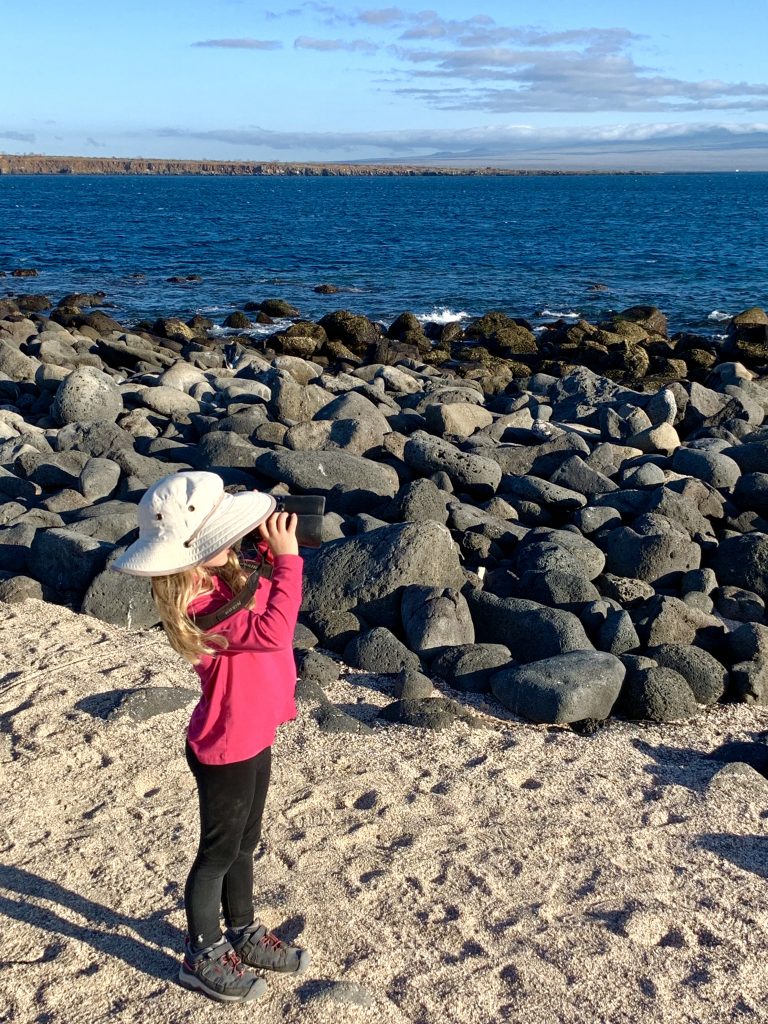
AUTHOR The Ecoventura Team
US travel writer Kimberly Bloom outlines why a Galapagos trip with Ecoventura is the ultimate family holiday
When US Travel Writer, Kimberly Bloom, traveled to the Galapagos Islands with her family she quickly realized how ideal it is as a family vacation destination. Here, she explains how it is so unique and what your children will learn on a trip to these stunning islands.
A trip to the Galapagos Islands with Ecoventura is the absolute dream vacation for children. Among the most pristine natural places on Earth, these stunning islands are a perfect place for your children to learn about nature, wildlife, and protecting our amazing planet. Your children will have once-in-a-lifetime experiences that will never be forgotten.
What will they learn? Geology, history, biology, and sustainability in an extraordinary open-air classroom. Here are just a few examples: The Galapagos Islands are unlike any other place on Earth
The landscapes are rugged and dramatic, the flora and fauna are unique, and the up-close view of wildlife is remarkable. The Galapagos archipelago (mostly uninhabited by humans) consists of 13 major islands, 6 small islands, and countless rocks and islets around the equator. Each island is different with incredibly diverse landscapes ranging from volcanic, black rock formations to beautiful stretches of white sand beaches. The islands have been called a “wonder of nature” due to their remoteness and the different ecological zones that have allowed species to adapt and evolve undisturbed. Your children will see things here that cannot be found anywhere else on Earth. In addition, due to the intersection of the Humboldt, Panama, and Cromwell currents, a unique, nutrient-rich, marine environment is created which hosts an unusual plethora of marine, bird and land-based life. The opportunity to experience such an incredible and untouched ecosystem is unmatched.

The Galapagos archipelago is one of the most active volcanic areas of the world. Over the last 200 years, more than 50 eruptions have occurred, some threatening the unique flora and fauna and some creating new land. Formed between 1 and 5 million years ago, each of the islands is a volcano, except for Isabela which is composed of 6 volcanoes. Due to their volcanic origin, the islands have striking features and, as a result of ongoing volcanic activity, they continue to change in shape, getting taller and larger. Children love to learn about the 13 active volcanoes in the Galapagos Islands.


Darwin’s “On the Origin of Species” was inspired by a visit to the Galapagos Darwin was inspired to write “On the Origin of Species”, a book that changed the world, after a 5 week visit to the Galapagos Islands in 1835. During his visit, Darwin discovered that several species of finches differed from island to island. His observations led to the idea of natural selection and the development of the theory of evolution. It is possible to see up to 13 different species of finches in the Galapagos. Your children will enjoy a visit to the Charles Darwin Research Station where they will learn the importance of the Galapagos Islands from both a historical and scientific perspective. They will also be introduced to ongoing conservation and sustainability efforts. Throughout the trip, your children will have many opportunities to envisage what it is like to be a scientist or marine biologist.
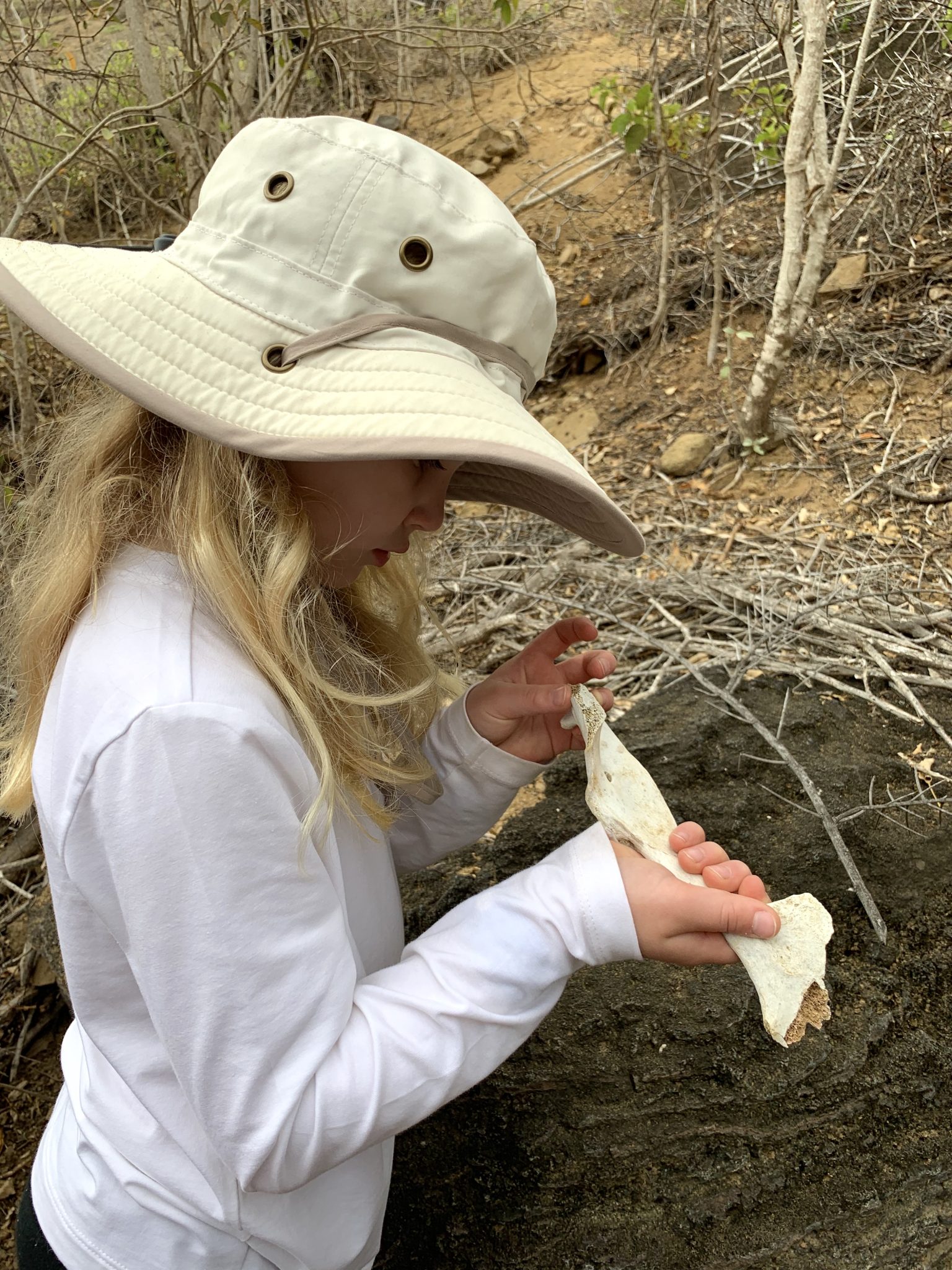
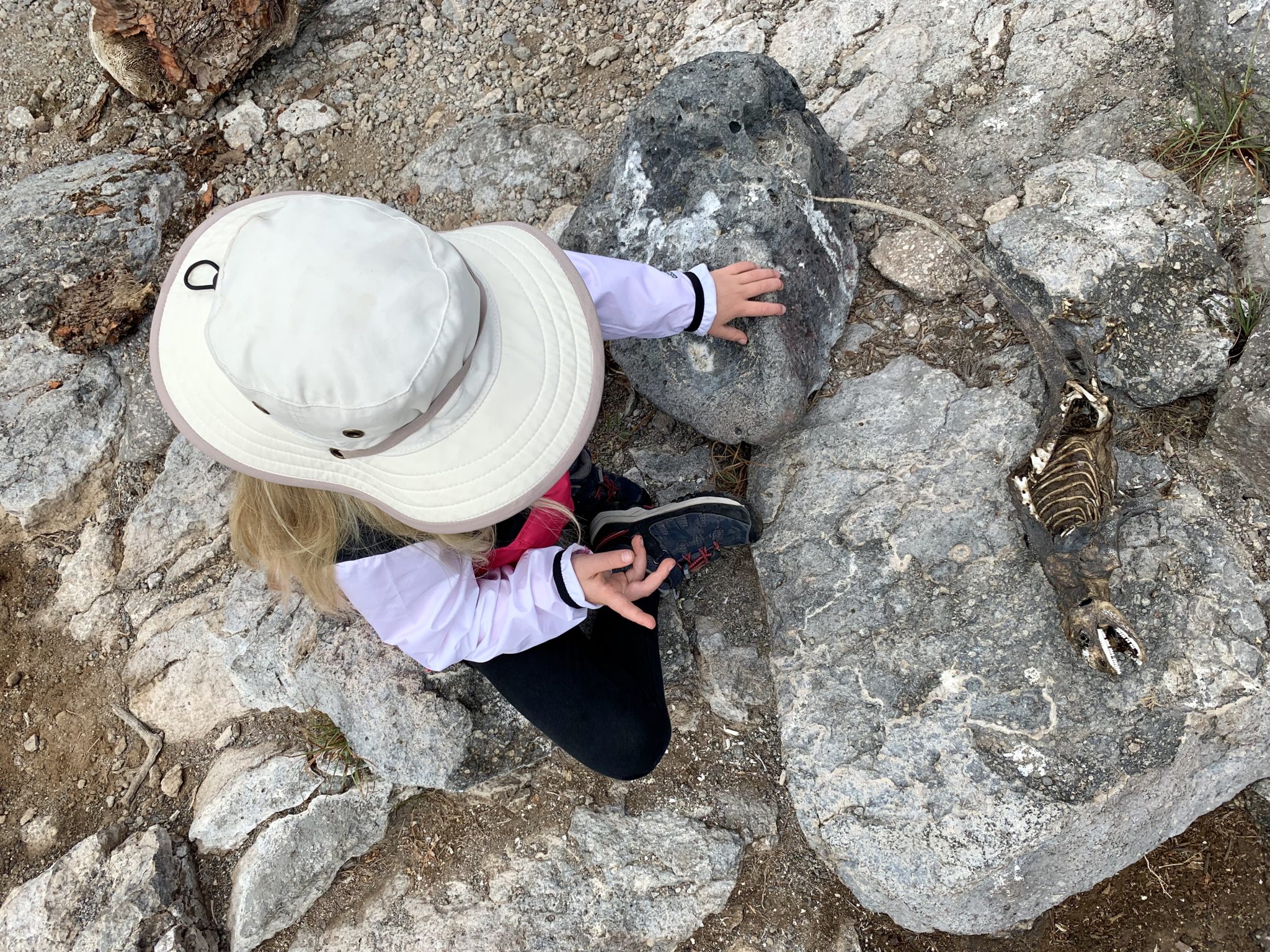
Being face-to-face with wildlife in the Galapagos Islands is incredible
Nowhere else in the world can you get this close to wildlife. Because the Galapagos Islands were isolated for so long and due to the lack of natural predators, Galapagos wildlife never developed a fear of humans. Your children will be able to look sea lions, iguanas and lizards in the eye and swim with sea turtles, sea lions, penguins, sharks, and schools of fish. They will observe nesting sites, watch elaborate mating dances, and much, much more. On land and in the sea, the Galapagos is one of the planet’s most awe-inspiring destinations.
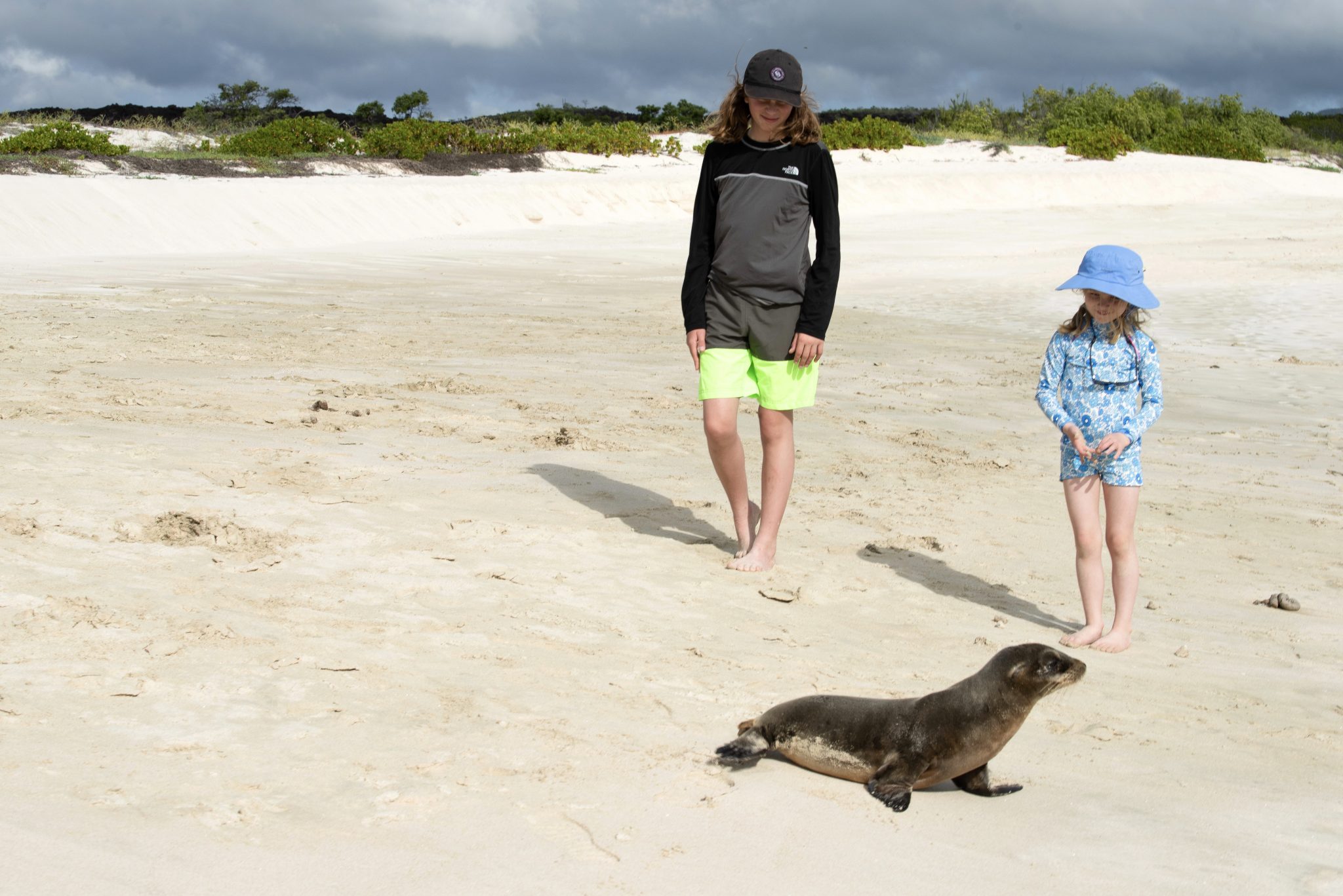
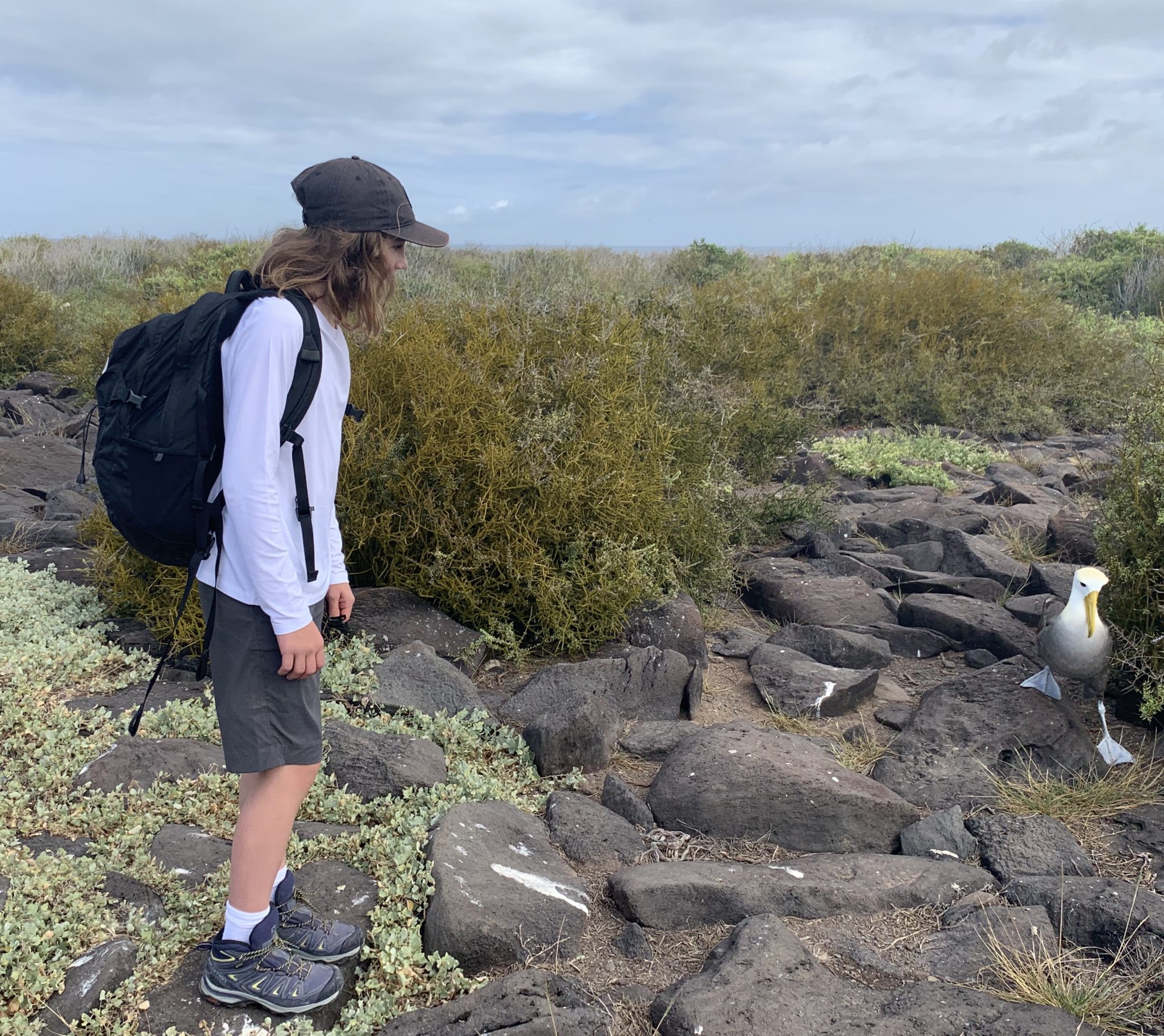
There is a reason that blue-footed boobies have blue feet (and other interesting facts)
The Galapagos is a living laboratory of wildlife experiences that will amaze your children. Each wildlife encounter is better than the last. Each encounter is not only exciting to witness, but provides an engaging educational opportunity. Ecoventura’s guides are truly top notch and are wonderful with children of all ages. The guides will explain the details of what the children are viewing, highlight wildlife behavior patterns, demonstrate wildlife sounds, teach how to identify the male and female of each species, explain relevant historical points, and note interesting facts. A snapshot of what they will learn:
Why do blue-footed boobies have blue feet?: The pigment that makes a blue-footed booby’s feet blue comes from their diet of fresh fish. The “bluer” the feet, the healthier the bird. The males display their beautiful, bright, sky-blue feet in an exaggerated, foot-raising, marching-band style parade to attract a mate. These funny-faced birds nest on the ground, providing lots of opportunities for your children to observe blue-footed boobies protecting their eggs, feeding their young, and witness their mating “parade”.

What does endemic mean?: Endemic animals and plants are those that are only found in a particular place. The Galapagos Islands are a treasure trove of endemic species. Approximately 97% of the reptiles and land mammals, 80% of the land birds, more than 30% of the plants, and 20% of the marine species in the Galapagos are endemic.
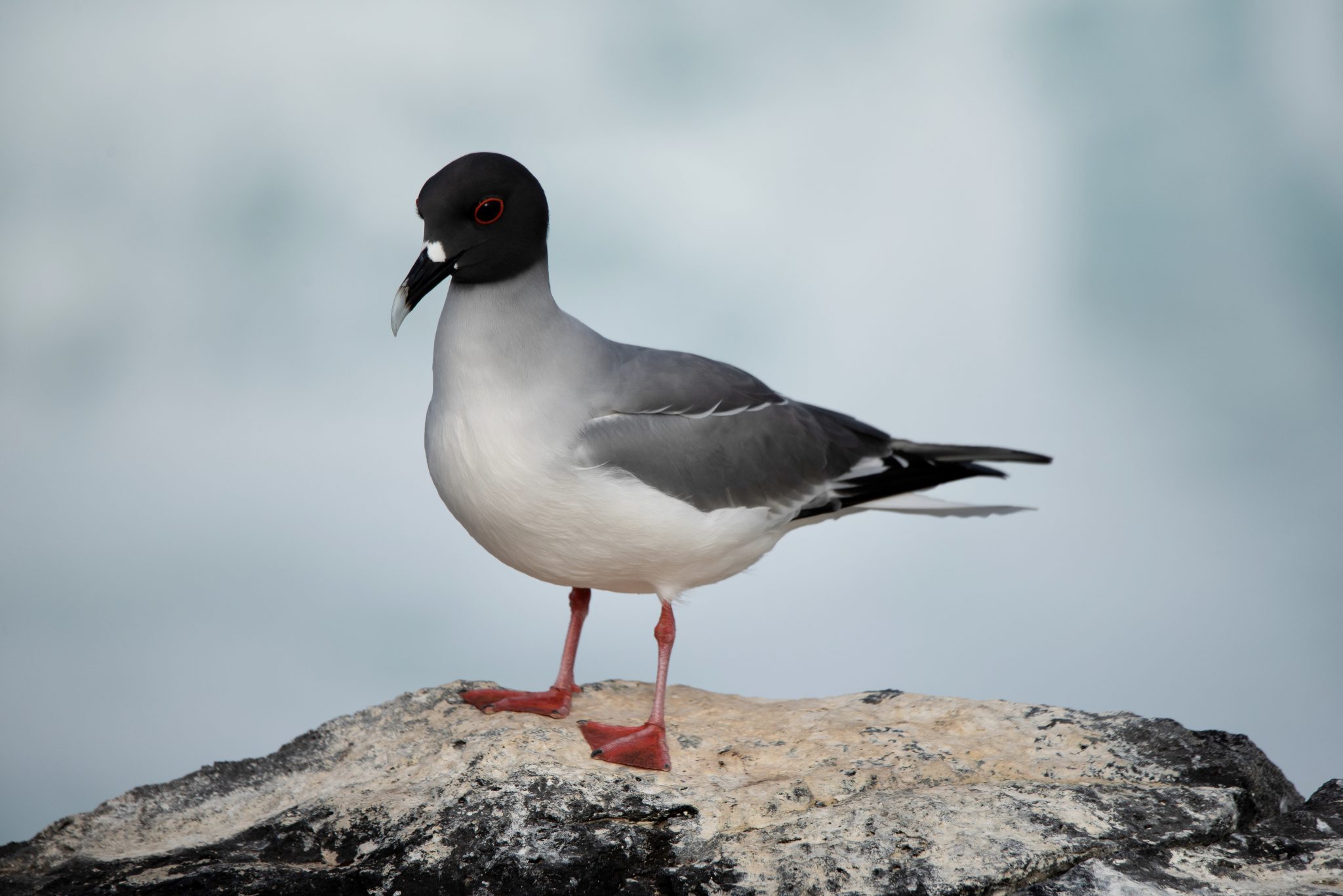
How can penguins survive in heat of the Galapagos?: Most penguins are associated with the colder regions of the Southern Hemisphere, specifically Antarctica. However, the Galapagos penguin can survive this close to the equator due to the cool waters of Humboldt current. While snorkeling, your children will be enraptured to see these penguins darting by at extremely fast speeds as they gobble up sardines.
Are sharks in the Galapagos dangerous?: Sharks in the Galapagos are not dangerous as they have a plentiful food supply and are uninterested in humans. On snorkel outings, your children will have no reason to be frightened when they see a few white tip or hammerhead sharks swim by or observe them sleeping in groups inside underwater caves.

Do giant tortoises speak?: Yes! Your children will hear these prehistoric-looking creatures make distinct, bellowing groans that sound a bit like loudly mooing cows. Only male tortoises vocalize. They also communicate with each other by standing tall and stretching their heads up as high as possible to show dominance.

What is a land iguana versus a marine iguana?: Depending on the island, your children will see land or marine iguanas splayed out on rocks basking in the sun. Land iguanas are yellowish and generally larger in size than marine iguanas. They have a tough, leathery mouth and pointy face so they can feed on the prickly pear cactus. Although many iguanas can swim, Galapagos marine iguanas are the only sea-going lizards in the world with the ability to be under water for as long as an hour. Marine iguanas are born black and become more colorful as they age (typically with a reddish or greenish hue). They eat algae and have large, sharp claws that help them grip onto rocks along the shore.

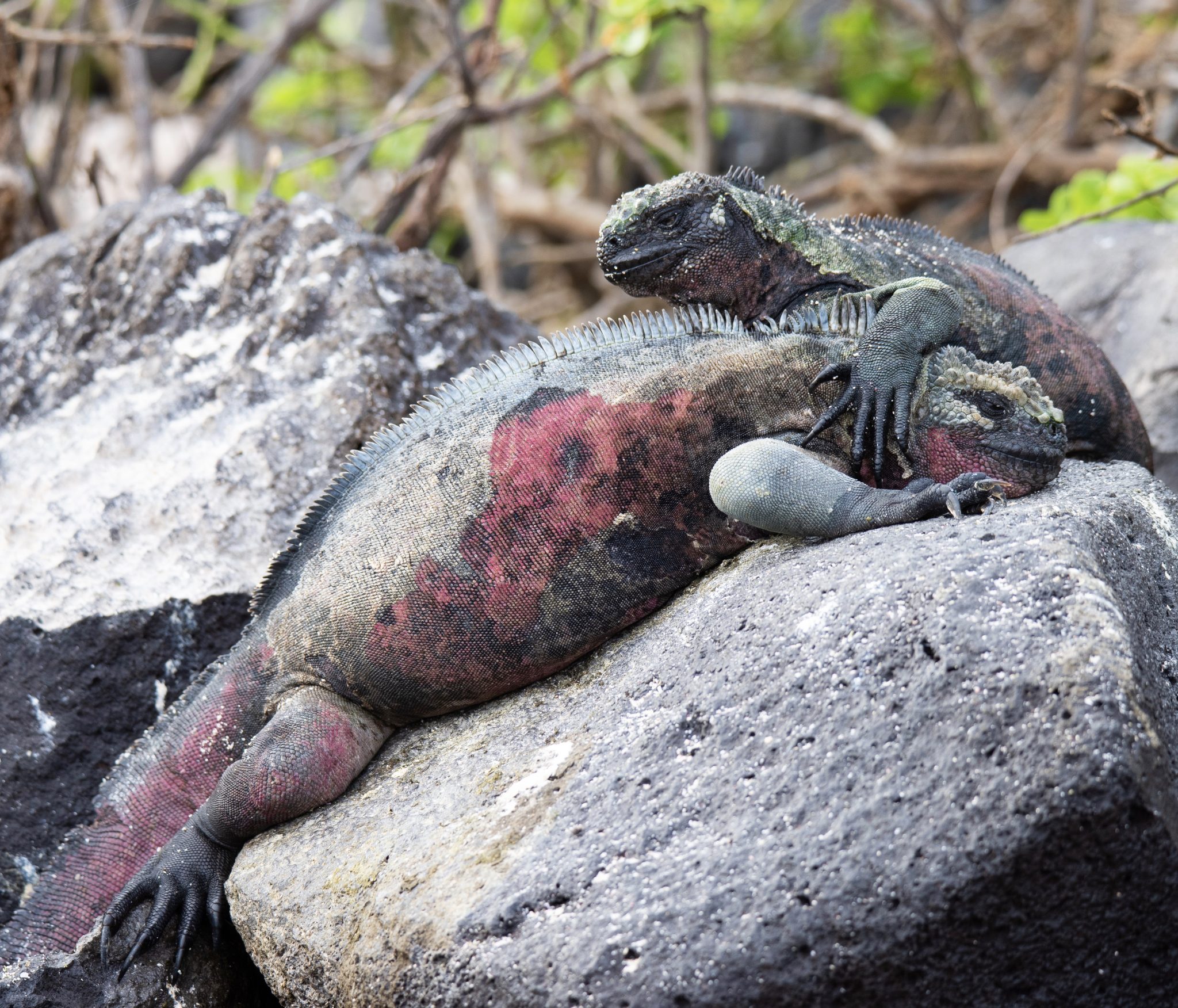
Who was Lonesome George and why is he famous?: Lonesome George lived to be more than 100 years old and was the last documented member of the Pinta Island subspecies of giant tortoise. The Pinta tortoise population declined due to hunting by sailors and fisherman and loss of habitat due to the introduction of goats from the mainland. Lonesome George was considered one of the rarest creatures in the world and became an important symbol for conservation efforts in the Galapagos Islands.
It is important to care for our planet
The Galapagos Islands are fragile. Overfishing, poaching, climate change, pollution, introduction of invasive species, and rampant tourism have taken their toll. Efforts to protect and preserve these beautiful islands are critical. Ecoventura has been a pioneer in environmental efforts and responsible tourism in the Galapagos Islands as well as in adopting sustainable practices. Throughout the trip, your children will learn first-hand about the importance of these conservation efforts and sustainability practices. One example of their commitment is that Ecoventura has sponsored over 60 students with scholarships in Ecology Project International (EPI) to develop young conservation leaders. Your children will have a chance to meet some of these students on Puerto Ayora Island for a tour of the town and an overview of ongoing conservation efforts. What better way to understand what is being done behind the scenes to protect the Galapagos than to meet with these young leaders? Your children will leave the Galapagos Islands understanding the importance of protecting our planet and realizing that they can help to make a difference.
Bring your children to this unique, unfathomably beautiful, open-air classroom to inspire their curiosity about the natural world. It is a truly magical, unforgettable family adventure.
For more information, or should you have any questions, please don’t hesitate to reach out to our team who would be happy to help: info@galapagosnetwork.com. We look forward to welcoming you and your children on board!
